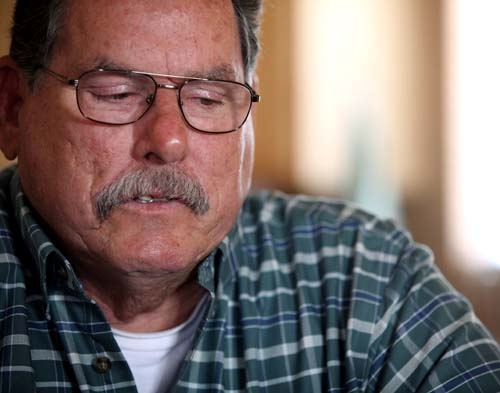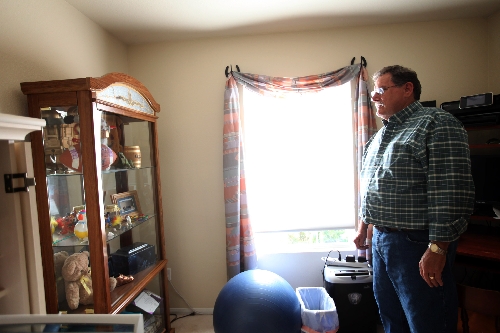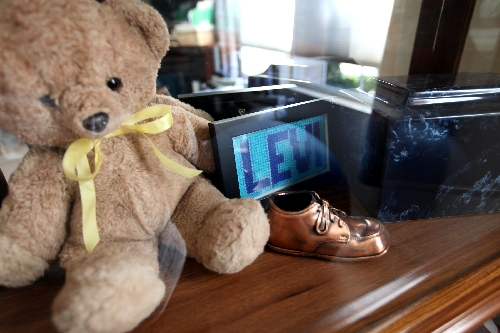Increasing suicides among Clark County children point to need for more awareness





Levi Johnson was 18 when he shot himself. A life snuffed out before it had a chance to begin. It was his second attempt at ending his life in the same year.
His parents tried to get him help.
His grades slipped, he became withdrawn, he was depressed and made comments beforehand. A failed stint in the Marines seemed to push him over the edge.
That January day in 2003, Levi cleaned his room, did laundry and got ready for work. Then he unlocked the gun case in his father’s closet, loaded the weapon, got into the bathtub, closed the curtain and called 9-1-1 to report his suicide.
"I fell to my knees when they told me," said Steve Johnson, Levi’s dad.
No one knows why Levi wanted to die.
UPTICK IN SUICIDES
Last year, 16 of Clark County’s children between the ages of 10 and 17 took their own lives. That’s four times higher than it was in 2008 and 2009, according to a recent study by the Nevada Institute for Children’s Research & Policy.
It’s an alarming statistic that points to a need in increasing suicide prevention awareness, Johnson said.
All 16 children were regularly attending school. They had no history with juvenile justice services. Some struggled with school. Some had been diagnosed with a mental illness. Only one had encountered the child welfare system. Two had a history of substance abuse. Four had previously attempted suicide.
Most died at home. Only a handful left a note. A majority – 11 – died by squeezing a firearm trigger, a leading cause of death for Nevada children, according to the Centers for Disease Control and Prevention. In four cases, the method was hanging. The remaining case was a prescription medication overdose.
The report suggests starting suicide prevention efforts in schools at an earlier age and expanding firearm safety campaigns.
"The biggest thing we’ve learned from looking at this information is, in a majority of these, they used a firearm to complete suicides," said Tara Plebus, the children’s research institute’s interim executive director. "That means these kids had access to one of the most lethal means there is."
Plebus said that means rethinking firearm safety, from accidental discharges and kids who think the gun is a toy, to putting more effort into protecting youth who might make impulsive, emotional decisions.
"You can’t go back on that," she said.
The Clark County Child Death Review Team analyzes cases involving the death of any child younger than 18. The team meets monthly and is comprised of members from the district attorneys and coroner’s offices, local police departments, the school district, the county Department of Family Services and the health district, among other agencies.
Despite the spike in suicides, child deaths overall in Clark County have decreased 23.8 percent since 2008.
The team makes recommendations to improve laws and policies supporting child safety and preventing future deaths. All cases reviewed by the team are confidential by law.
‘ACCESS TO MEANS’
The Nevada Department of Health and Human Services’ suicide prevention office, which also participates on the review team, is working on a campaign to increase suicide awareness.
Misty Vaughan Allen, suicide prevention coordinator, said keeping the means – such as guns and medications – away from someone with suicidal thoughts is essential. "Statistics across the nation show there’s equal amounts of mental health issues and thoughts of suicide, but the difference in suicide rates is access to means."
But she warned against an anti-gun message in a state where firearms are popular.
"We’re not talking about don’t teach guns or don’t own guns," Allen said. "Make sure you’re storing them in a way someone struggling with thoughts of suicide does not have access to them. If you’re worried about a loved one struggling with mental health issues and thoughts of suicide, store them outside the home until that person is in a safer place. We also shouldn’t be keeping medications we don’t need."
In December 2011, a 10-year-old boy and a 13-year-old girl shot themselves in the head in separate incidents on the same day, only hours apart. Both used unsecured weapons in their homes. Kameron Asgari, 10, died that day. Marina Momcheva, 13, died from her injuries a few days later.
Educating families and agencies that work with youth about recognizing the signs when a child is contemplating suicide is necessary, Allen said.
The economy or bullying could be factors in these deaths, but connecting them to suicide can cause more harm, because "we don’t know what’s going on in their heads," Allen said.
She pointed to a "dramatic" increase in media exposure linking bullying and suicide. "If a vulnerable person reads those headlines, it can be very dangerous," she added.
Whatever the reason behind a child’s depression, parents need to confront their kids if they are having suicidal thoughts, "and get to the core of how they feel," Johnson said.
"You have to ask the tough questions. ‘Have you ever thought of killing yourself?’ " Johnson said, choking back tears. "You might upset them a little, but I’d rather have my child upset at me, and alive. Alive and mad at you is a lot better than not there."
Contact reporter Kristi Jourdan at kjourdan@reviewjournal.com or 702-383-0440.
WARNING SIGNS OF SUICIDE• Talking about wanting to die or looking for ways to do it.
• Talking about feeling isolated, hopeless, trapped, in unbearable pain or hopeless.
• Talking about being a burden to others.
• Increasing use of alcohol or drugs.
• Being anxious, agitated or restless.
• Sleeping too little or too much.
• Extreme mood swings.
• Withdrawing.
WHAT TO DO
• Do not leave the person alone.
• Remove any firearms, alcohol, drugs or sharp objects that could be used in suicide.
• Call the National Suicide Prevention Lifeline at 800-273-TALK.
• Seek help from a mental health professional.
Source: Nevada Office of Suicide Prevention












